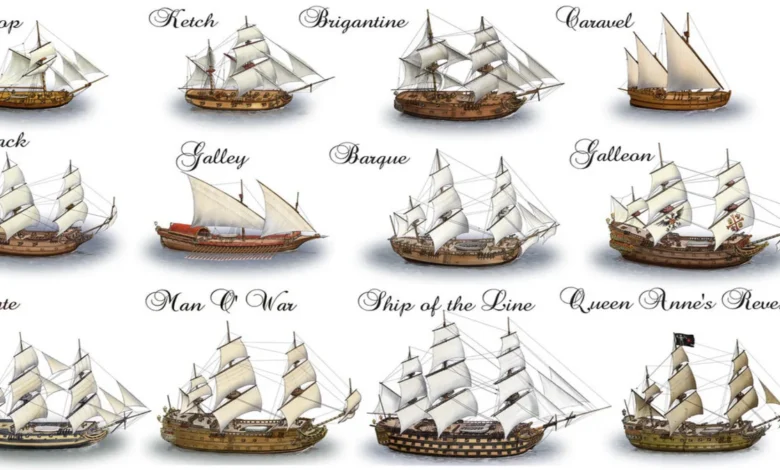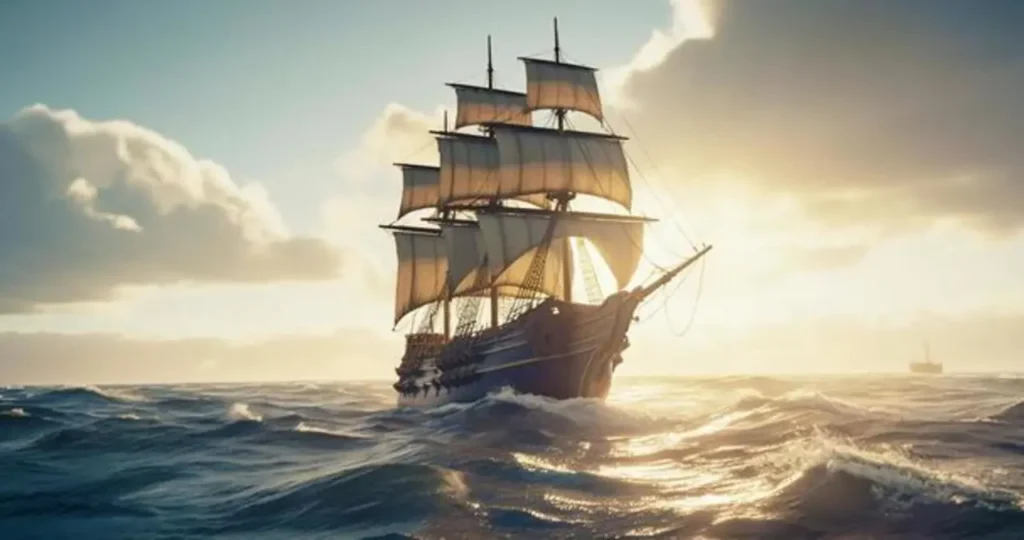Pirate Ship Names: Exploring the Myths and Realities of Buccaneer Vessels

Pirate ships have long captured the imagination of adventurers, historians, and storytellers alike. These vessels, often shrouded in mystery and legend, were more than just tools for plunder—they were symbols of freedom, fear, and rebellion. But what’s in a name? There’s a fascinating blend of history, mythology, and psychology regarding pirate ship names. In this article, we’ll dive deep into pirate ship names, exploring their origins, meanings, and the stories behind some of the most infamous vessels ever to sail the high seas.
The Importance of Pirate Ship Names

Pirate Ship Names was no trivial matter for pirates. A ship’s name was its Identity, reflecting its crew’s ambitions, fears, and personality. Unlike naval or merchant ships, which often bore names tied to royalty, religion, or trade, pirate ships carried names designed to strike fear into the hearts of their enemies and inspire Loyalty among their crews.
Pirate ship names were carefully chosen to convey power, speed, and menace. They often reflected the ship’s purpose, the captain’s personality, or the crew’s shared values. For example, names like Revenge or Retribution hinted at a thirst for vengeance, while Queen Anne’s Revenge or Royal Fortune suggested a challenge to authority and a desire for wealth.
The Origins of Pirate Ship Names
Pirate ship names were influenced by a variety of factors, including:
1. Historical and Mythological References
Many pirate ships were named after historical figures, mythological creatures, or legendary events. For example, Blackbeard’s Queen Anne’s Revenge was named in honour of Queen Anne of England, while The Golden Hind (captained by Sir Francis Drake, a privateer often considered a pirate by Spain) referenced a mythical deer.
2. Religious and Superstitious Beliefs
Pirates were a superstitious bunch, and many ship names reflected their beliefs. Names like The Devil’s Own or Lucifer’s Revenge were meant to invoke fear and suggest that dark forces protected the ship.
3. Personal Vendettas and Triumphs
Some ships were named to commemorate personal victories or vendettas. For instance, The Revenge was a popular name among pirates who sought to avenge past wrongs, while Captain Henry Every named The Fancy after successfully capturing a Mughal treasure ship.
4. Intimidation and Psychological Warfare
Pirates understood the power of fear, and many ship names were designed to intimidate their targets. Names like The Terror, The Dreadnought, or The Bloodthirsty were meant to strike terror into the hearts of merchant sailors and encourage them to surrender without a fight.
Famous Pirate Ship Names and Their Stories
Let’s take a closer look at some of the most famous pirate ship names and the stories behind them:
1. Queen Anne’s Revenge
Perhaps the most famous pirate ship of all time, Queen Anne’s Revenge, was the flagship of the notorious pirate Blackbeard (Edward Teach). Originally a French slave ship named La Concorde, Blackbeard captured it in 1717 and renamed it. The name directly challenged the British monarchy, symbolizing Blackbeard’s defiance and ambition.
2. The Whydah
Named after the West African slave port of Ouidah, The Whydah was originally a slave ship before being captured by the pirate Samuel “Black Sam” Bellamy. Bellamy turned it into one of the most feared pirate ships of its time. The ship’s name reflected its origins and the dark trade it was once involved in.
3. The Golden Hind
Captained by Sir Francis Drake, The Golden Hind was a galleon that circumnavigated the globe between 1577 and 1580. While Drake was technically a privateer (a state-sanctioned pirate), his exploits were legendary. The ship’s name referenced a mythical deer, symbolizing speed and grace.
4. The Adventure Galley
Captained by William Kidd, The Adventure Galley was a hybrid sailing and rowing vessel designed for both speed and manoeuvrability. Kidd initially set out as a privateer but later turned to piracy. The ship’s name reflected its dual purpose: adventure and plunder.
5. The Fancy
Captained by Henry Every, The Fancy was a fast and agile ship that played a key role in one of the most lucrative pirate raids in history. In 1695, Every captured a Mughal treasure ship, earning a fortune and cementing his place in pirate lore. The name The Fancy suggested elegance and sophistication, a stark contrast to the brutal reality of piracy.
The Psychology Behind Pirate Ship Names
Pirate ship names weren’t just random choices—they were carefully crafted to serve specific psychological purposes. Here’s how:
1. Inspiring Fear
Names like The Terror or The Bloodthirsty were designed to intimidate enemies and discourage resistance. By creating an aura of fear, pirates could often avoid costly battles and secure their plunder with minimal effort.
2. Building Loyalty
A ship’s name could also inspire Loyalty and camaraderie among its crew. Names like The Brotherhood or The Loyalist emphasized the bonds between crew members and their shared commitment to the pirate cause.
3. Challenging Authority
Many pirate ship names were direct challenges to established authority. Names like Queen Anne’s Revenge or The Royal Fortune symbolized rebellion against the monarchy and the pursuit of wealth and freedom.
4. Reflecting Identity
A ship’s name often reflected the personality and values of its captain and crew. For example, The Fancy suggested sophistication and elegance, while The Revenge hinted at a thirst for vengeance.
How Pirates Named Their Ships
Naming a pirate ship was a collaborative process, often involving the entire crew. Here’s how it typically worked:
- Captain’s Vision
- The captain usually had the final say in naming the ship, but they often sought input from their crew. The name had to resonate with everyone on board.
- Crew Input
- Pirates valued democracy, and many crews voted on potential names. This helped ensure that the name reflected the crew’s collective Identity.
- Symbolism and Meaning
- The chosen name had to carry symbolic weight, whether it referenced mythology, a personal vendetta, or a shared value.
- Intimidation Factor
- Above all, the name had to strike fear into the hearts of their enemies. A good pirate ship name was a weapon in itself.
The Legacy of Pirate Ship Names
Today, pirate ship names continue to captivate our imagination. They appear in books, movies, and video games as reminders of a bygone era of adventure and rebellion. Names like The Black Pearl (from Pirates of the Caribbean) or The Jolly Roger (a generic term for pirate ships) have become iconic symbols of piracy.
But beyond their pop culture appeal, pirate ship names offer a window into the lives and minds of the men and women who sailed under the black flag. They reveal the hopes, fears, and dreams of people living outside society’s bounds, seeking freedom and fortune on the high seas.
Conclusion
Pirate ship names are more than words—they are powerful symbols that reflect piracy’s history, mythology, and psychology. From Queen Anne’s Revenge to The Whydah, these names tell the stories of legendary vessels and the daring individuals who sailed them. Whether designed to intimidate, inspire, or challenge authority, pirate ship names remain an enduring legacy of one of history’s most fascinating eras.
So, the next time you hear a pirate ship’s name, take a moment to consider the story behind it. You might uncover a tale of adventure, rebellion, and the relentless pursuit of freedom.
This article comprehensively explores pirate ship names, blending historical facts with engaging storytelling to create an SEO-friendly piece that will captivate readers and rank well in search engines.
5 FAQS
- Why were pirate ship names so important?
- Pirate ship names were crucial because they symbolized the crew’s Identity, values, and ambitions. They were designed to intimidate enemies, inspire Loyalty among the crew, and reflect the ship’s purpose or the captain’s personality. A well-chosen name could strike fear into the targets’ hearts, making securing plunder without a fight easier.
- What were some common themes in pirate ship names?
- Common themes included intimidation (e.g., The Terror, The Dreadnought), rebellion (e.g., Queen Anne’s Revenge, Royal Fortune), mythology (e.g., The Golden Hind), and personal vendettas (e.g., The Revenge). Many names also reflected religious or superstitious beliefs, such as The Devil’s Own or Lucifer’s Revenge.
- How did pirates come up with their ship names?
- Naming a pirate ship was often a collaborative process. The captain typically had the final say but sought input from the crew to ensure the name resonated with everyone. Names were chosen based on their symbolic meaning, psychological impact, and relevance to the crew’s shared values or goals.
- What is the most famous pirate ship name?
- One of the most famous pirate ship names is Queen Anne’s Revenge, the flagship of the notorious pirate Blackbeard. Other iconic names include The Whydah, The Golden Hind, and The Fancy. These ships are remembered for their roles in legendary pirate exploits.
- Do pirate ship names still influence modern culture?
- Absolutely! Pirate ship names continue to inspire books, movies, and video games. For example, The Black Pearl from Pirates of the Caribbean and The Jolly Roger (a generic term for pirate ships) are widely recognized. These names keep the legacy of piracy alive in popular culture, reminding us of the daring and rebellious spirit of buccaneers.





